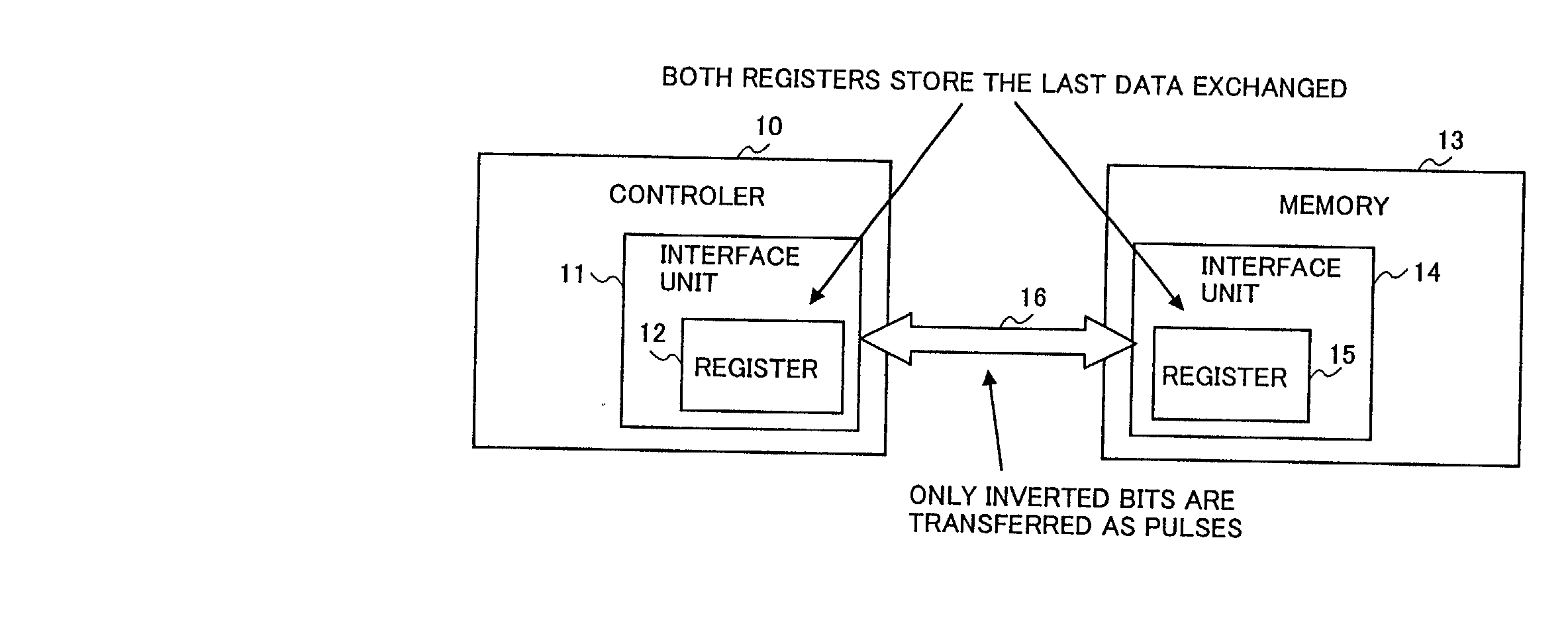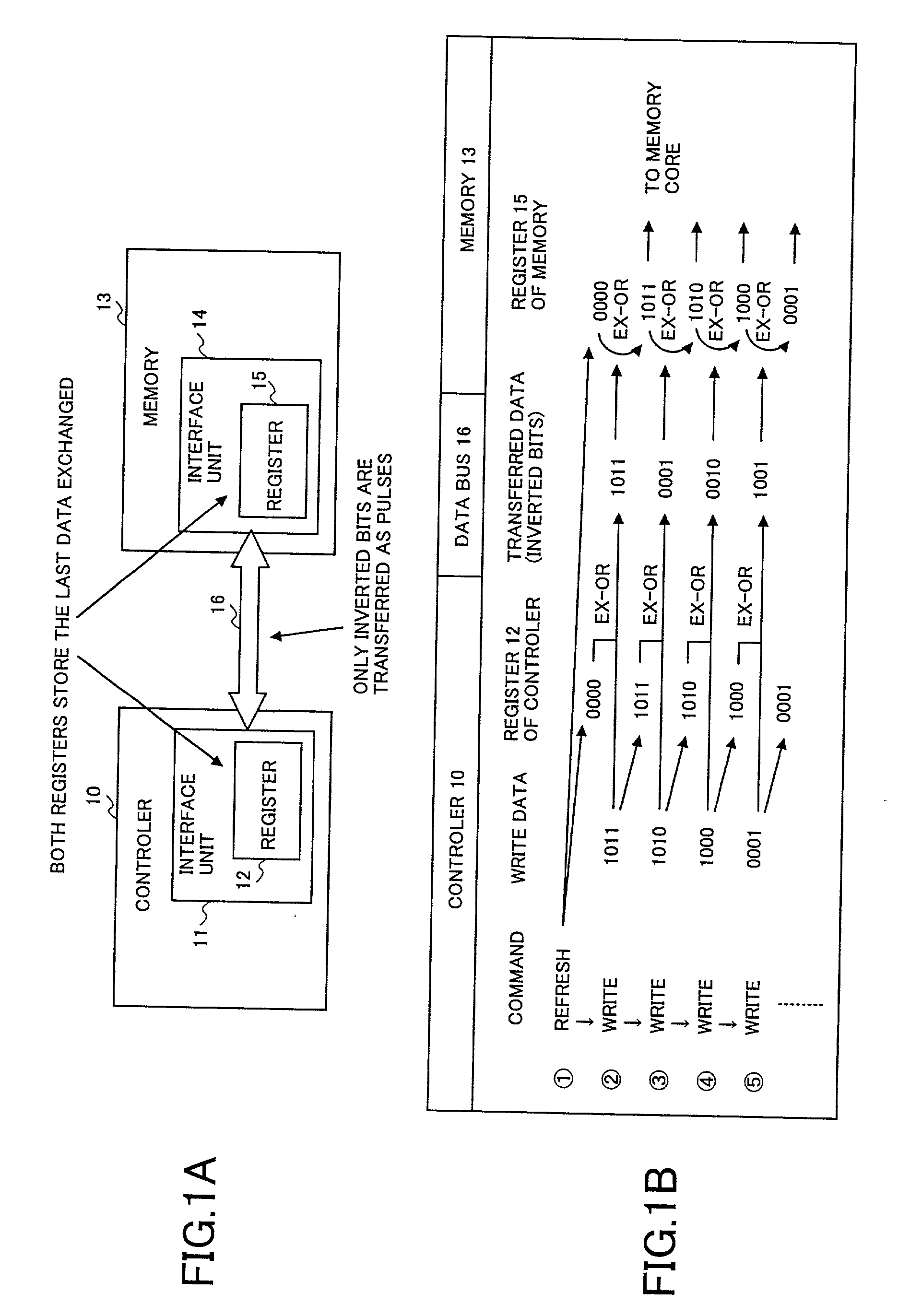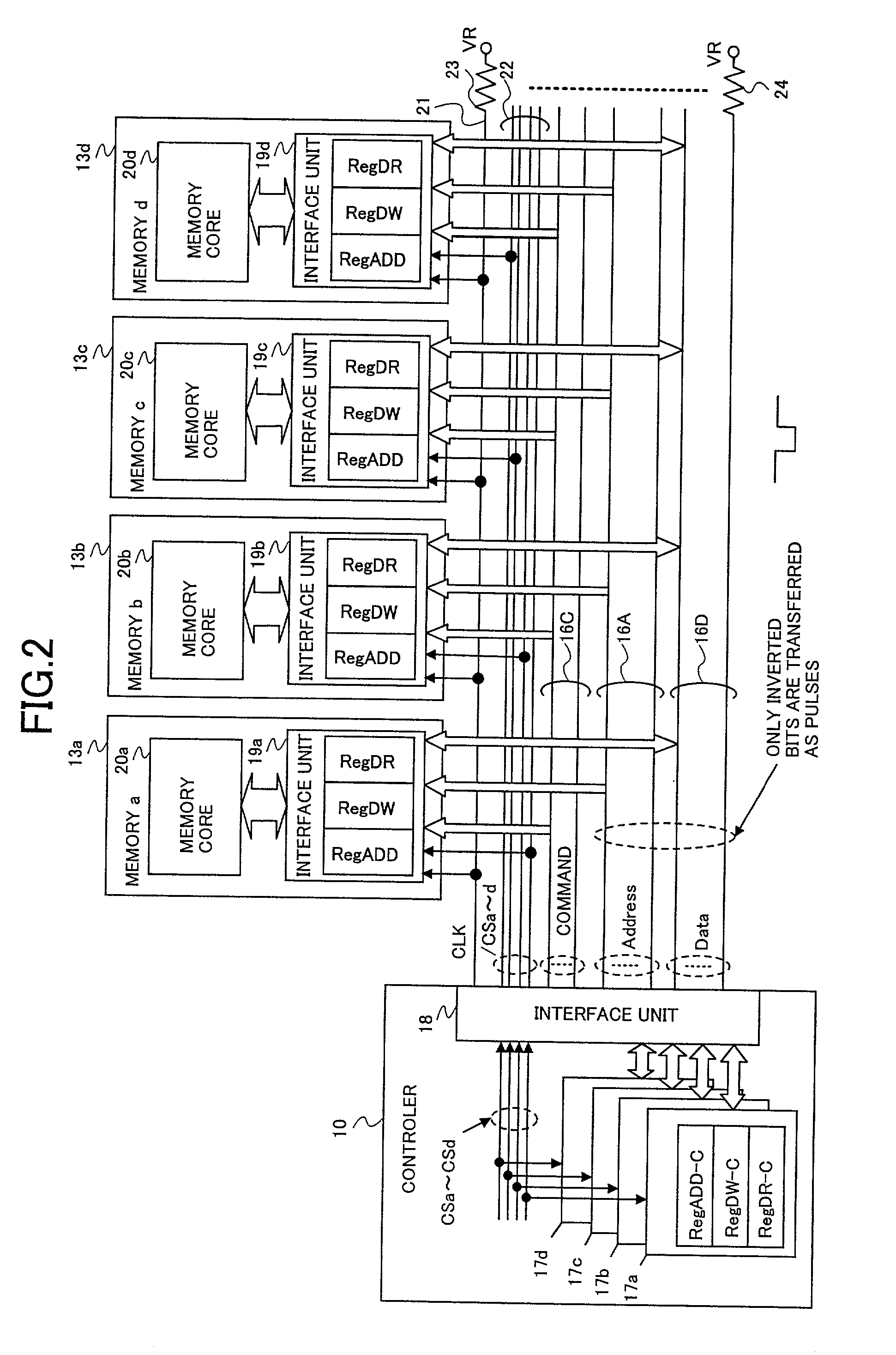Semiconductor device with circuitry for efficient information exchange
- Summary
- Abstract
- Description
- Claims
- Application Information
AI Technical Summary
Benefits of technology
Problems solved by technology
Method used
Image
Examples
first embodiment
[0081] Each interface unit 19a-19d has a data input unit which receives data (Write Data) from the data bus 16D. FIG. 3 shows the data input unit. The data input unit includes a clock generating unit 25, a command input and decode unit 26, an OR gate 27, and "n" data input units 28.sub.1-28.sub.n where "n" is a natural number. The clock generating unit 25 receives a clock signal from a clock line 21, generates an internal clock CLK1, and sends it to the command input circuit / command decode unit 26 and the data input units 28.sub.1-28.sub.n. The command input circuit / command decode unit 26 is turned ON (Enable mode) when the unit receives a chip select signal CS (any one of CSa-CSd), receives a command through the command bus 16C, and decodes it. The command input circuit / command decode unit 26 drives one of three control lines 33a-33c in accordance with the result of the decoding. In the case of a read command, the command input circuit / command decode unit 26 turns on the control li...
second embodiment
[0095] the data input unit provided in the interface units 19a-19d of the memories 13a-13d will be described below.
[0096] FIG. 6 is a block diagram showing the configuration of the data input unit according to the second embodiment of the present invention. Each unit which is identical to one shown in FIG. 3 is referred to by the same numeral as used in FIG. 3. The second example is a data input unit which is activated by a low-edge, which is an edge observed when voltage goes down to LOW from HIGH.
[0097] Data input units 128.sub.1-128.sub.n are provided instead of the data input units 28.sub.1-28.sub.n shown in FIG. 3. In FIG. 6, however, only the data input unit 128.sub.1 is shown. A 1 / 2 frequency divider 44 is provided. The divider divides an internal clock CLK1 by a ratio of 2, and generates two internal clock signals CLK2 and / CLK2, which are complementary to each other.
[0098] The data input unit 128.sub.1 includes a comparator 29, an inverter 46, an input latch unit 45, a puls...
fifth embodiment
[0116] the data input unit provided in the interfaces 19a-19d of the memories 13a-13d will be described below with reference to FIG. 13. The fifth example is a data input unit which detects LOW edges of the data IN in an asynchronous manner. This is an improvement over the fourth example. Common components to both FIG. 6 and 13 are referred to by the same numerals.
[0117] The circuit of the fifth example is similar to that of FIG. 6, but its input latch unit 62 includes a low-edge detection unit as shown in FIG. 13. This low-edge detection unit includes a gate 47, a comparator 48, a latch 49, and a delay circuit 50. The circuit comprising a gate 51, a comparator 52, and an inverter 63, switches ON and OFF the gate 47.
[0118] FIG. 14 is a timing chart showing the operation of the fifth example described in FIG. 13. An LOW pulse {circumflex over (1)} of the data IN is converted to a HIGH pulse of the data " / IN " by passing through an inverter 46, and is input, through the gate 47, to a ...
PUM
 Login to View More
Login to View More Abstract
Description
Claims
Application Information
 Login to View More
Login to View More - R&D
- Intellectual Property
- Life Sciences
- Materials
- Tech Scout
- Unparalleled Data Quality
- Higher Quality Content
- 60% Fewer Hallucinations
Browse by: Latest US Patents, China's latest patents, Technical Efficacy Thesaurus, Application Domain, Technology Topic, Popular Technical Reports.
© 2025 PatSnap. All rights reserved.Legal|Privacy policy|Modern Slavery Act Transparency Statement|Sitemap|About US| Contact US: help@patsnap.com



